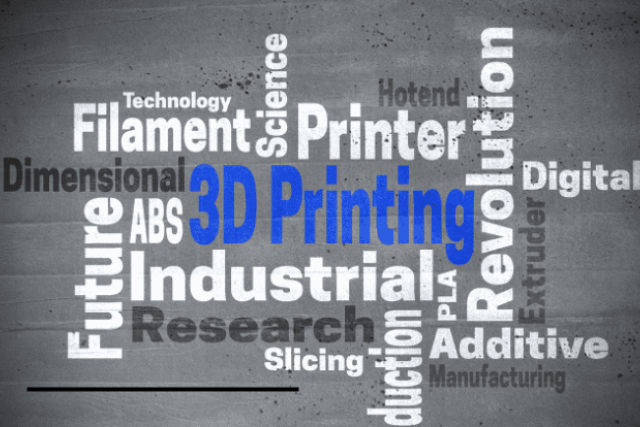Dubai is recognized as a leader in adopting innovative technologies to build a sustainable and energy-efficient urban environment. With the rapid development of smart cities, the integration of 3D printing technology is transforming how buildings are designed, constructed, and maintained to enhance energy efficiency.
This cutting-edge approach is aligned with Dubai’s commitment to sustainability and its goal to reduce energy consumption while minimizing the environmental footprint. In this article, we explore how 3D printing technology can significantly improve the energy efficiency of Dubai’s smart city buildings.

Optimized Building Designs for Energy Efficiency
One of the most powerful advantages of 3D printing technology is its ability to create highly optimized building designs that directly contribute to energy efficiency.
Traditional construction methods often limit the scope for design innovation, but 3D printing Dubai enables architects and engineers to experiment with complex geometries and customized layouts.
By using 3D printing, buildings can be designed with natural ventilation systems, strategic shading, and thermal massing techniques that reduce the need for artificial heating and cooling. For instance, walls and façades can be 3D printed with patterns or textures that provide insulation and help regulate indoor temperatures, reducing the building’s overall energy demand.
Additionally, solar orientation can be optimized during the design phase. By precisely positioning windows, solar panels, and other components during the printing process, buildings can make the most of natural light and solar energy, significantly enhancing energy efficiency.
How can 3D printing technology improve the energy efficiency of Dubai’s smart city buildings?
Sustainable Building Materials
Energy efficiency goes beyond design—it also involves the use of sustainable building materials that reduce a building’s operational energy use. 3D printing technology allows for the creation of structures using eco-friendly and energy-efficient materials, such as recycled concrete, geopolymer composites, and natural fibers.
These materials not only have a lower carbon footprint compared to traditional building materials like steel and concrete but also offer superior thermal insulation properties. By using materials that enhance thermal insulation, 3D-printed buildings in Dubai can reduce the energy required for heating and cooling, leading to lower energy consumption and more environmentally friendly urban spaces.
Moreover, 3D printing can integrate phase-change materials (PCMs) into construction, which help regulate indoor temperatures by absorbing and releasing thermal energy. This capability further improves the energy efficiency of Dubai’s smart city buildings.
Table of Contents
Efficient Use of Resources and Minimizing Waste
One of the defining features of 3D printing technology is its ability to minimize material waste by precisely adding material only where it is needed. Traditional construction methods often result in significant waste, both in terms of materials and energy. However, 3D printing eliminates much of this waste, optimizing the use of resources and reducing energy consumption during the construction process.
In Dubai’s smart city projects, this resource-efficient approach is crucial for improving overall energy efficiency. By reducing the need for excess raw materials, transportation, and labor, 3D printing helps cut down on the energy required for building production. This streamlined process not only enhances sustainability but also lowers the overall energy consumption of the construction industry.
Integrating Smart Energy Systems
Smart city buildings are equipped with advanced energy management systems that monitor and control energy use in real time. 3D printing technology enables the seamless integration of these smart energy systems into the building structure itself. For example, buildings can be 3D printed with built-in sensors, energy storage units, and smart meters that track energy consumption and optimize the use of power.
By integrating these systems during the 3D printing process, buildings can be designed to automatically adjust lighting, temperature, and ventilation based on occupancy and external environmental factors. This intelligent energy management reduces unnecessary energy use, ensuring that buildings operate at peak efficiency at all times.
Moreover, 3D-printed buildings can be designed to work in harmony with renewable energy sources. Solar panels and wind turbines can be strategically integrated into the design, maximizing the use of clean energy and further reducing the reliance on non-renewable energy sources.
Customization for Climate Control
Dubai’s climate poses unique challenges for maintaining energy-efficient buildings due to the extreme heat and humidity. 3D printing technology offers a customized solution by allowing buildings to be tailored to the specific environmental conditions of the region.
For example, buildings can be 3D printed with double-skin façades that provide additional layers of insulation, reducing heat transfer and lowering the energy required for air conditioning.
Additionally, 3D-printed structures can incorporate cooling systems such as passive ventilation, green roofs, or thermal walls that help dissipate heat and keep interiors cooler without relying on energy-intensive HVAC systems.
By customizing buildings to account for Dubai’s unique climate, 3D printing technology significantly improves energy efficiency, making it easier for buildings to maintain comfortable indoor environments with minimal energy use.

Reducing Embodied Energy in Construction
Embodied energy refers to the total energy required to produce a building, from the extraction of raw materials to construction and assembly. Traditional construction methods often have high embodied energy due to the extensive use of heavy machinery, transportation, and manufacturing processes.
3D printing technology helps reduce the embodied energy in Dubai’s smart city buildings by streamlining the construction process. With on-site production and the ability to print buildings in layers, 3D printing reduces the need for transportation and heavy machinery, lowering the overall energy expenditure during construction.
Additionally, 3D printing enables the use of locally sourced materials, further reducing the energy required for material transportation. By minimizing embodied energy, Dubai’s smart city buildings can become more energy-efficient from the very beginning of their lifecycle.
Future-Proofing Buildings with 3D Printing
3D printing not only improves the energy efficiency of Dubai’s smart city buildings today but also helps future-proof them for emerging energy challenges. As building automation and smart grid technologies continue to evolve, 3D-printed structures can be easily modified and upgraded to incorporate new energy-efficient solutions.
For example, 3D-printed buildings can be retrofitted with energy-saving technologies such as solar panel skins or high-performance insulation as they become available. This adaptability ensures that Dubai’s smart city buildings remain energy-efficient in the long term.
How can 3D printing technology improve the energy efficiency of Dubai’s smart city buildings?
Conclusion
3D printing technology is a game-changer for enhancing the energy efficiency of Dubai’s smart city buildings. By optimizing designs, integrating sustainable materials, reducing waste, and enabling the seamless incorporation of smart energy systems, 3D printing is paving the way for a more sustainable urban environment.
As Dubai continues to lead in innovation and technology, the adoption of 3D printing will play a crucial role in reducing energy consumption and achieving the city’s ambitious sustainability goals.

